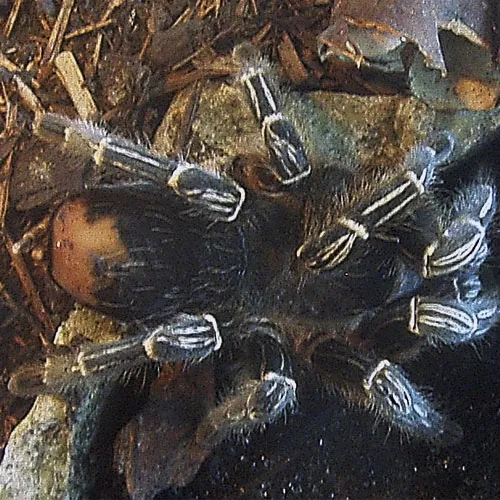Striped Knee Tarantula Scientific Name
The world of tarantulas is filled with fascinating creatures, and one of the most striking is the Striped Knee Tarantula. But, before diving into the details, let’s start with the basics, specifically, the scientific name. Understanding the scientific name is crucial because it provides a universal language for identifying and studying this species. The scientific name ensures clarity and avoids confusion that can arise from common names, which may vary by region. This helps researchers, enthusiasts, and anyone interested in these amazing arachnids to communicate accurately about the specific tarantula they are discussing. The scientific name follows a binomial nomenclature, consisting of two parts: the genus and the species.
Understanding the Genus and Species
The Striped Knee Tarantula’s scientific name is Brachypelma auratum. Breaking this down, Brachypelma represents the genus, and auratum represents the species. The genus Brachypelma includes several other well-known tarantula species, such as the Mexican Red Knee Tarantula (Brachypelma hamorii). The species name auratum comes from the Latin word for “golden” or “gilded,” a reference to the beautiful golden coloration often seen on the carapace and legs of these tarantulas. Knowing the genus helps us understand the tarantula’s broader family connections, while the species name specifies the exact type of tarantula we are discussing. This classification system is essential for accurate identification and understanding the relationships between different tarantula species.
Where Does the Striped Knee Tarantula Live
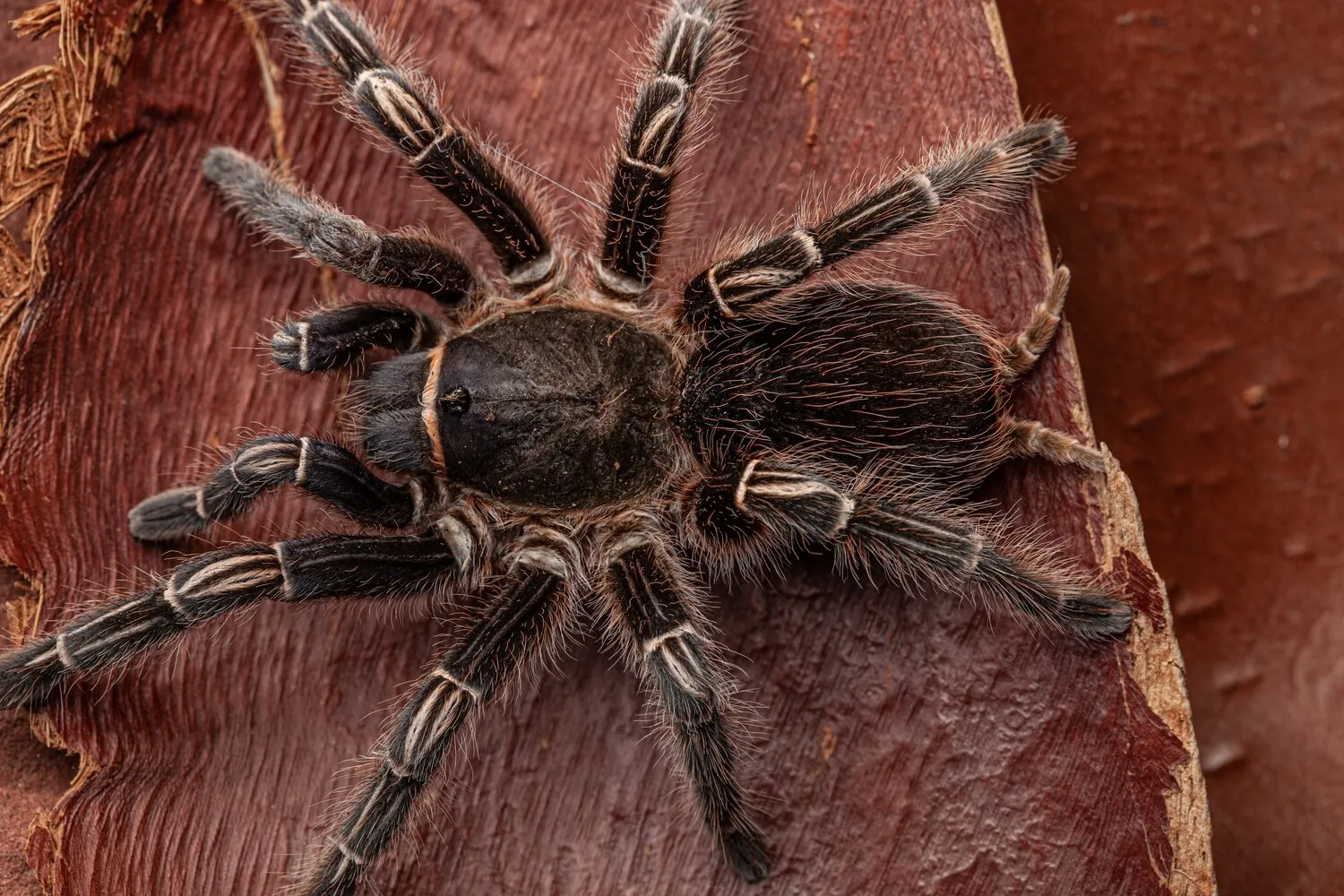
The Striped Knee Tarantula is native to a specific region, primarily found in the Pacific coastal areas of Mexico. Their natural habitat provides the necessary conditions for their survival and reproduction. This information is key to understanding their needs in captivity if you are considering keeping one as a pet. Knowing the natural environment of the Striped Knee Tarantula helps in providing proper care, including appropriate temperature, humidity, and substrate. It also helps in understanding their behavior and habits.
Habitat and Natural Environment
In the wild, Striped Knee Tarantulas are ground-dwelling creatures that typically inhabit burrows. They prefer areas with relatively dry climates and a moderate amount of vegetation. Their burrows offer protection from predators and the elements. The soil composition in their natural habitat is usually a mix of sand and clay, which allows them to easily dig and maintain their burrows. The availability of suitable shelter and a stable environment is crucial for their survival. The presence of surrounding vegetation also helps them maintain a comfortable microclimate within their burrows. Furthermore, the habitat provides them with opportunities to hunt and forage for food.
Appearance and Characteristics of Striped Knee Tarantula
The Striped Knee Tarantula is easily recognizable due to its striking appearance. This makes them a favorite among tarantula enthusiasts. Knowing these characteristics is helpful for identification and appreciation of their unique beauty. The appearance also provides clues about their behavior and survival strategies.
Key Features to Identify
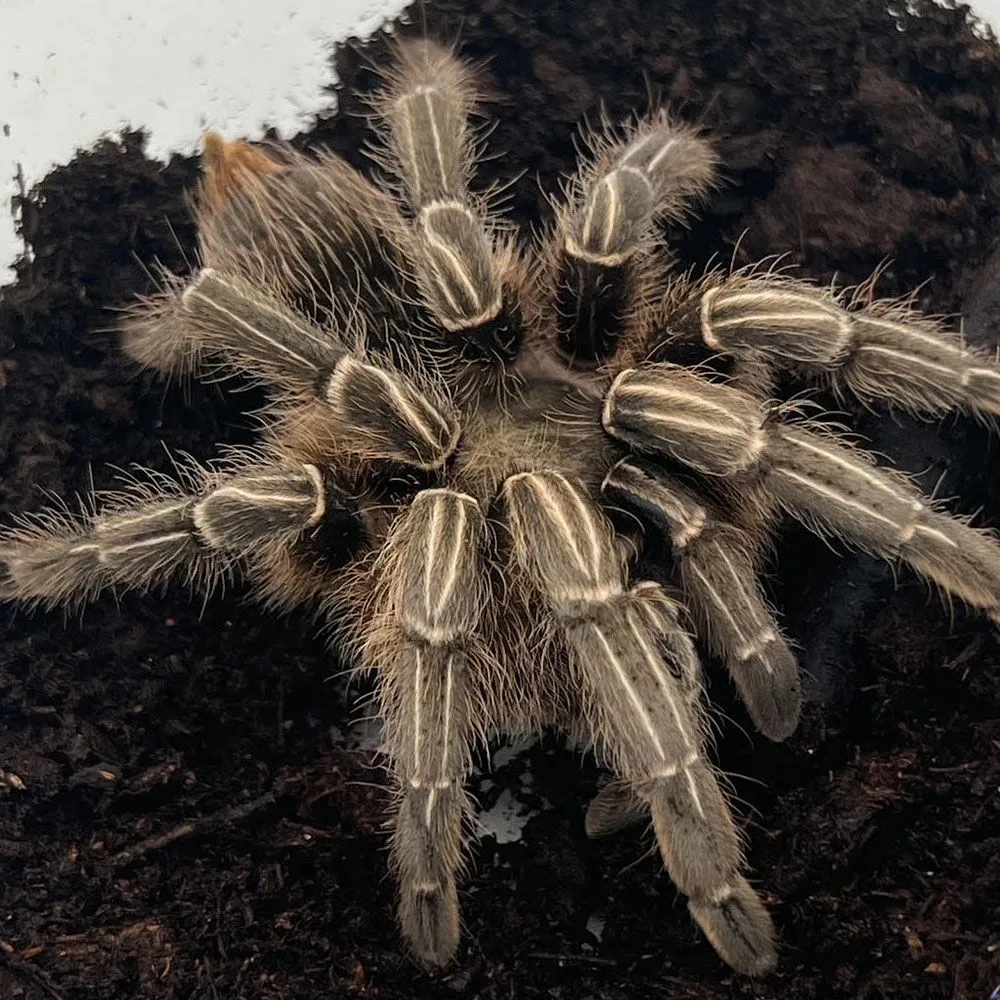
One of the most distinctive features of the Striped Knee Tarantula is the bold striping on its legs, which alternate between black and orange or cream. This coloration gives them their common name. The carapace, or the top of the body, is typically a deep black, and the abdomen is covered in reddish-brown hairs. The size of the tarantula can vary, with females generally being larger than males. They also possess a robust build, which contributes to their overall impressive appearance. Their chelicerae, or fangs, are also prominent, which are used for catching prey and defense. The combination of these features makes the Striped Knee Tarantula a visually stunning species.
Striped Knee Tarantula Temperament and Behavior
Understanding the temperament and behavior of the Striped Knee Tarantula is crucial for responsible pet ownership and appreciation of their natural habits. These arachnids exhibit a range of behaviors depending on their environment and circumstances. This insight helps in providing a safe and enriching environment. The knowledge also assists in interpreting their actions and providing appropriate care. Learning about their defensive mechanisms is important to understanding how they react to perceived threats.
Defensive Mechanisms
When feeling threatened, Striped Knee Tarantulas may exhibit various defensive behaviors. They are generally considered a docile species, but they can become defensive if provoked. One common defense mechanism is the flicking of urticating hairs from their abdomen. These hairs are irritating and can cause skin irritation. They may also adopt a threat posture, rearing up and displaying their fangs. In addition, they may attempt to flee or hide. This combination of defense mechanisms makes them capable of deterring potential predators. Understanding these behaviors is important for handling and caring for them safely.
Striped Knee Tarantula Diet and Feeding Habits
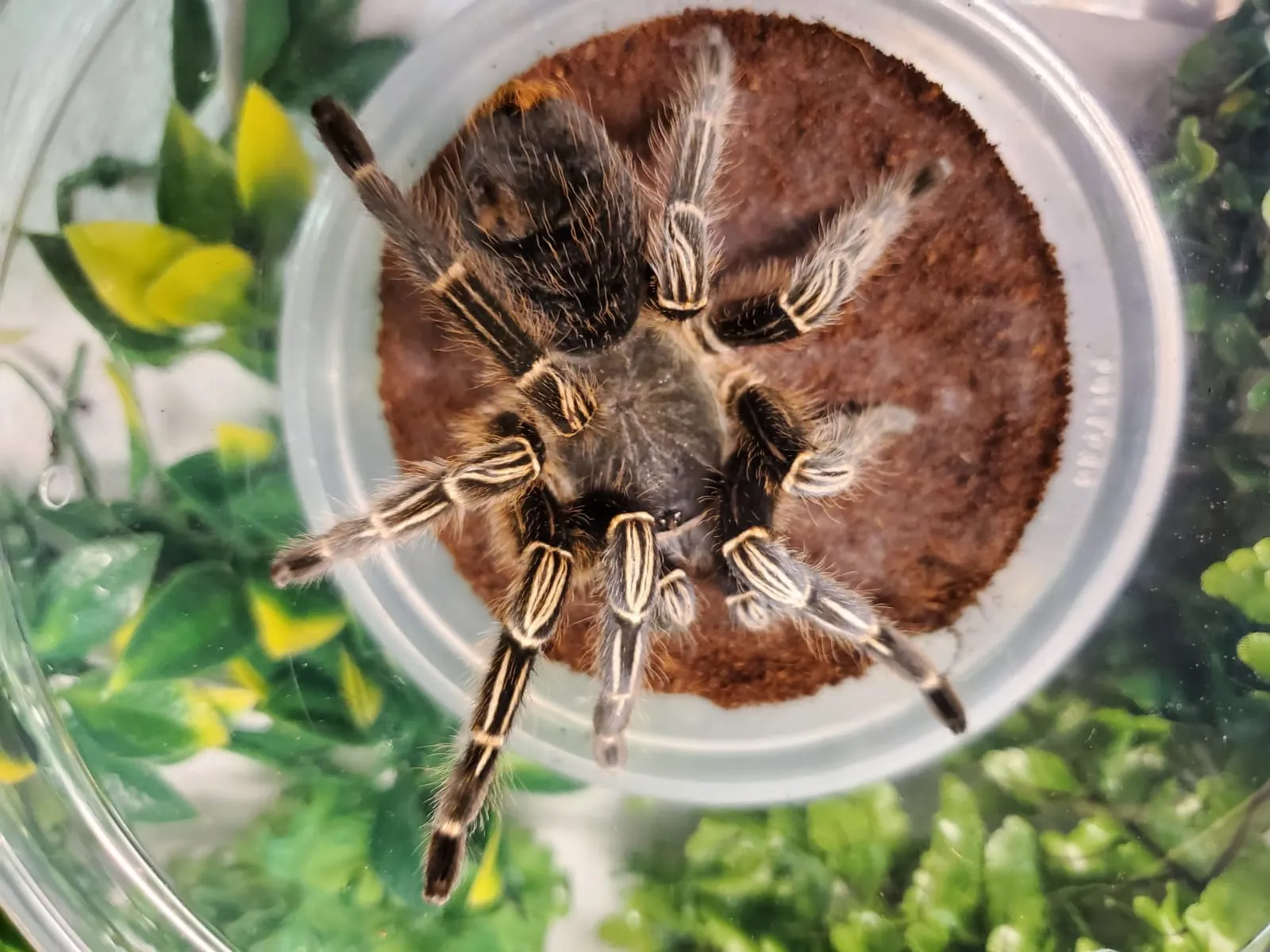
The feeding habits of the Striped Knee Tarantula are a crucial part of their survival and well-being. Knowing what they eat and how they obtain their food is essential for ensuring their health in both the wild and captivity. The diet also plays a key role in their growth, development, and overall health. Understanding their feeding behavior is essential for providing the appropriate nutritional needs.
What Do They Eat
In the wild, Striped Knee Tarantulas are opportunistic predators, mainly feeding on insects and other invertebrates. Their diet typically includes crickets, grasshoppers, beetles, and even small lizards. In captivity, they can be fed a variety of insects, such as crickets, roaches, and mealworms. It’s important to provide a balanced diet and ensure the insects are gut-loaded with nutritious food before feeding them to the tarantula. The frequency of feeding depends on the tarantula’s age and size, with younger tarantulas needing to eat more frequently than adults.
Striped Knee Tarantula Lifespan
One of the most interesting aspects of the Striped Knee Tarantula is its lifespan. Understanding how long they live can help in appreciating these magnificent creatures and planning for their care. Their longevity is a significant factor for those considering them as pets. Learning about the factors that influence their lifespan is helpful to ensure they live as long as possible.
Factors Influencing Longevity
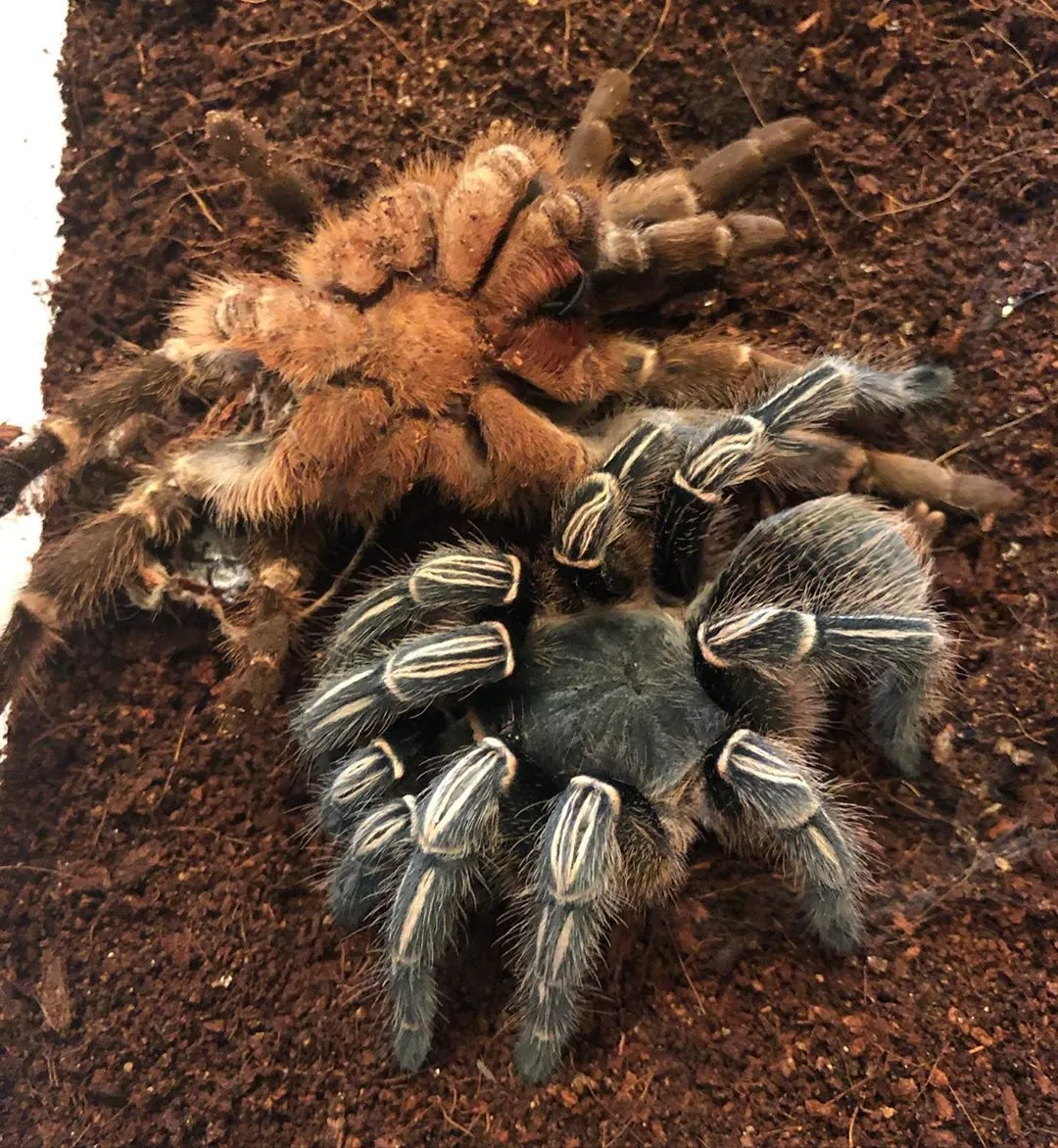
Female Striped Knee Tarantulas generally live longer than males, often living for 12 to 20 years or even longer in some cases. Male tarantulas typically have a shorter lifespan, usually 5 to 10 years. The lifespan can be influenced by several factors, including diet, environmental conditions, and genetics. Providing a proper diet, maintaining the correct temperature and humidity, and avoiding stressors can all contribute to a longer and healthier life for your tarantula. Regular maintenance and a suitable enclosure are vital for the tarantula’s well-being and longevity. Careful monitoring of their health is equally important.
